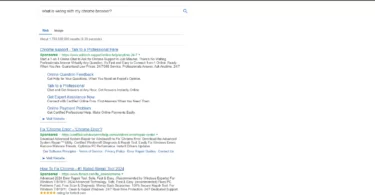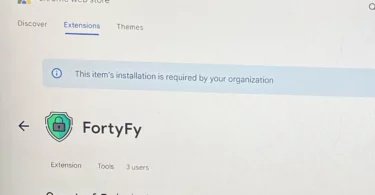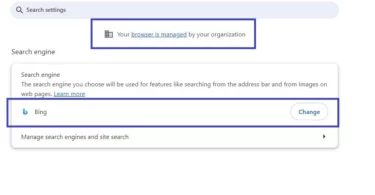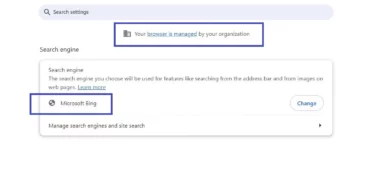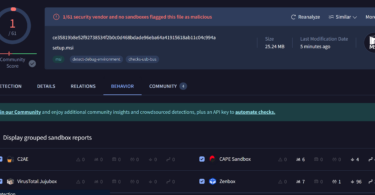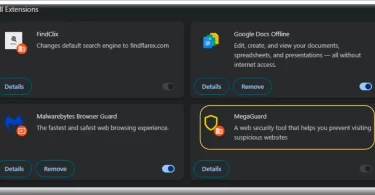Boyu.com.tr is what we call a browser hijacker or a browser redirect. It’s a rogue component that installs in your browser and gains elevator privileges. It then changes the homepage and default search engine and starts rerouting your searches...
Category - Browser Hijacker
What is a browser hijacker?
A browser hijacker is a software initiating browser redirects to select websites and landing pages without the user’s consent. Browser redirects are called as such because of the effect they have on the browsers they embeds themselves in. Namely, software applications that belong to this particular category have the capacity to take over the browser by overriding the user’s configurations of it and installing their own. Ecamples of this include setting a new homepage, changing the default search engine, and at times even introducing a new toolbar to the browser’s interface.

In addition to the above, these programs trigger something we call page redirects, which is where the term ‘browser redirect’ originates from. Page redirects, in turn, are the instance in which your browsing program automatically loads a new URL in your current tab or just spontaneously opens a new one to load said URL.
Browser hijackers are very often associated with computer viruses, although it is factually incorrect to use these terms interchangeably. Browser redirects or hijackers are actually not malicious and they don’t have the qualities necessary to inflict any real harm on the infected computer – much unlike viruses.
Instead, it would be more accurate to refer to these programs as potentially unwanted or PUP’s. This is because despite their relative harmlessness, there are a number of issues related to them that make them an undesirable presence in one’s OS. And we would like to elaborate on those issues further down in this article.
How does a browser hijacker infect you?
In most instances of first seeing such an application on their machine, infected users will have no idea where it came from. And that is because the developers of this type of software rely on stealth tactics in order to have it successfully distributed, most commonly software bundling. As part of it, the developer will usually include the browser hijacker in the setup of another program (typically some free system optimization tool or similar piece of programming). The hijacker will be included as an optional install, meaning that users would normally have the opportunity to leave the hijacker out of the installation process.
However, if the user were to select the default installation settings of said optimization tool, which tends to most often be the case, then the added component (in this scenario, the browser hijacker) will automatically be installed as well. The only catch is that this information is generally withheld from the end user and they come to find out about it already post factum.
What can a browser hijacker do?
Browser hijackers generally serve one purpose: generating paid ads. These are advertising tools in a sense and their creators earn money from clicks on the advertisements that they showcase on users’ screens during their browsing sessions.
With that in mind, again you can see that they don’t have any malicious intentions. The problems arise in the practices that these software products are often involved in, in order to maximize their profits from said clicks.
Namely, hijackers will very often be engaged in collecting data from your web browser so as to optimize their online ads and tailor them to each individual user. This is rarely made known to the user in question (just like the installation process itself), and there are also a lot of questions that arise as to how the gathered information can be utilized aside from just the target ads.
In addition, as you might have guessed it already, browser hijackers expose users to vast quantities of unwanted web locations. Either way, among the numerous sites and pages that browser redirects can link to, there can be those that are unsafe and may potentially lead to malware infections, including higher-class malware like Trojans or ransomware.
How do you remove a browser hijacker?
Anyone who has ever had a browser hijacker on their computer knows that removing them is trickier than uninstalling regular programs, because the developers deliberately avoid including an obvious uninstallation option. So as a result, users are forced to figure out how and where to locate all the components of the hijacker that has ended up nestled in their system. And if you happen to miss one – that residual part of the software can oftentimes be enough for it to end up reinstalling itself in the computer, which can be highly frustrating, not to mention suspicious.
Thus, in order to effectively get rid of hijackers, it’s a good idea to have some professional malware removal tool scan your computer. Alternatively, there are special removal guides available for specific browser hijackers. In fact, if you can pinpoint the exact variant that has infected your system, then chances are we might have a guide created for it already, which is what this category is dedicated to.
How to remove FortyFy Extension from Chrome
FortyFy is a type of rogue browser extension that security researchers categorize as a browser hijacker. It is similar to other recently detected rogue apps like PubQuo and the Bing Redirect virus, and another extension that is installed with...
How to remove NebulaNanoel Extension from Chrome and other browsers
We created this page to address a malware infection with a fake extension called NebulaNanoel. If you are reading this, you are probably bombarded with redirects to sites like Boyu and fake bing searches. There is also another extension that serves...
How to Get Rid of Bing Redirect
The infamous Bing redirect “virus” has to be one of the most prevalent and long-lived types of browser hijacker. You install something on your PC that tricks you (likely through file-bundling) into giving the hijacker permission to...
How to Remove PubQuo
PubQuo is a type of potentially unwanted software that displays the typical traits of a browser hijacker. It automatically changes the settings of Chrome, Edge, and other Chromium browsers upon installation, and it does this without requesting...
How to Remove Bimq From Chrome, Edge, and Other Browsers
The Bimq browser hijacker isn’t anything new to us – it’s just an upgraded version of the infamous Bing redirect virus. It’s basically a rogue search engine disguised as the legitimate Bing that will latch onto your browser...
PubSurf Removal Instructions
Fake apps have become so common nowadays as browser hijacker components that many people believe they are no threat at all. The current PubSurf infection is one of several rebrands we’ve seen recently – namely JoisApp, TjboApp and...
“Managed by your organization”: Why It’s There and How to...
When a network administrator or a third-party app has control of your Chrome browser, you’ll see a message “Managed by your organization”. This could be perfectly fine if the PC is indeed part of a network, but if it’s your...
How to remove the GuardGo extension
This page is here to inform you about the GuardGo extension, what it does, and how to successfully remove it. Don’t worry, the guide is real, we tested and removed GuardGo already and we are not faking it like the other guides out there. We are real...
How to remove the MegaGuard browser extension
What Is MegaGuard? The MegaGuard extension presents itself as a benign security tool on the Google Play Store that’s said to block access to unsafe sites. But appearances can be deceiving and this Chrome extension is actually a browser hijacker...

